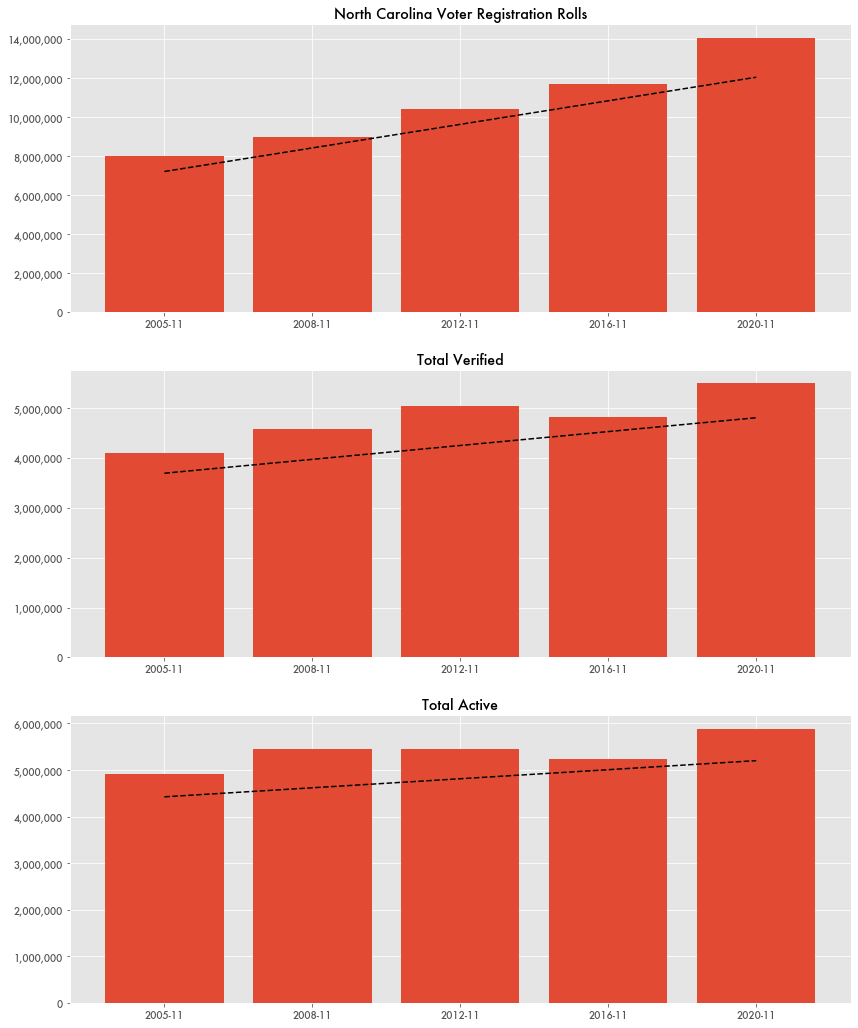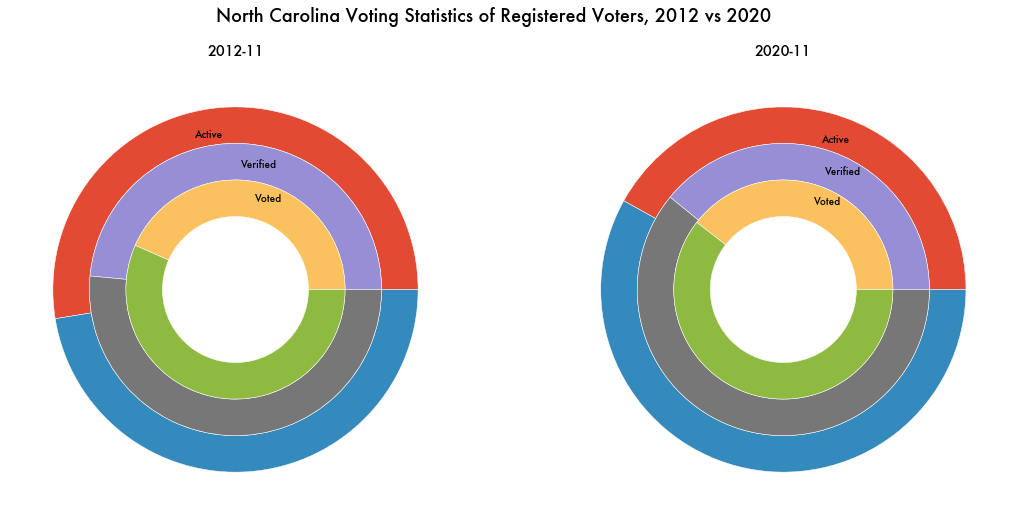In North Carolina, 101 Percent of Verified Voters Cast a Ballot in November
According to state registration data, more people voted in North Carolina’s 2020 election for president than were confirmed as a resident of the state with the right to vote.
Out of 5.54 million votes cast in the election, 5.49 million were verified by the state (registration data snapshot 2020/11/03, voting snapshot 2020/12/02). It would be the first time this has happened in a presidential election in the state based on available data going back to 2005.
Many more people were listed in North Carolina’s registration data, but states continually verify the identity and residency of voters using driver’s license records, change of address information, and mortality records to confirm that their registration is legitimate as mandated by federal and state law.
State voter registration data doesn’t delineate if a citizen voted in the most recent election or not, so it's not possible to tell how many unverified voters might have voted. But there were at least 55,855 votes by unverified registrants—the number of presidential ballots cast minus total state verified voters. Some of those that were unverified may become verified as the rolls are updated.
The 2020 election had historically large turnout across the country as many states enabled mail-in voting. The Trump campaign has continued to contest the results even as many of their lawsuits have been thrown out in court.
While the number of voters on the roll has steadily increased, it was really in the last four years that the number of voters as a percentage of verified and active registrants jumped. The 2016 election also had an inordinately large number of votes per active and verified registrants.
Voting Rolls, List Maintenance, and Registration Fraud
There were over 14 million people on the state’s registration roll, an historically large number, almost double what it was in 2005. But many of those were flagged as either unverified or inactive—still eligible to vote, but they hadn’t voted in recent elections. Of those voters considered “active,” it was also an historic amount: 94 percent. There were almost a million more active registrants in 2020 than fifteen years prior.
Citizens can fall off a state’s voting rolls for a number of reasons that disqualify them under the National Voter Registration Act: leaving the state, becoming a felon, dying, or even being deemed mentally incompetent.
If a citizen hasn’t voted in two federal election cycles, they are asked to confirm their residency and deemed inactive. If they don’t confirm and don't vote in two additional cycles, they are removed from the voting roll.
According to the U.S. Election Commission Association, almost 17 million citizens were removed from voter rolls from 2014 to 2016.
State's refer to the process as list maintenance, but critics often decry the process as “purging” because some amount of legitimate voters regularly get kicked off. And there are numerous lawsuits across the country that contest the results of a state's registration roll changes, with groups like the Brennan Center pushing for more transparency in the maintenance process.
In 2008, representatives of local election boards testified before the House Subcommittee on Elections that there are ongoing issues with registration fraud and voter roll maintenance, including the inability to clean up lists until four years after a voter is identified as no longer eligible.
A publication by the National Conference on State Legislators in 2012 noted that list maintenance was necessary to avoid the occasional examples where there are more names on the voting rolls than the voting age population. And a 2012 report from Pew Charitable Trusts estimated that 1 out of every eight registrations is flawed or invalid, including duplicate entries and dead voters.
Another example of this would be a 2019 lawsuit by the Public Interest Law Foundation against the director of elections for the city of Detroit for failing to maintain their voter registration rolls, where there were 30,000 more people on the voting rolls than in the voting age population of the city and many instances of dead and duplicate registrants. Over 1,600 were dead for over 10 years. Some were minors and some had birth dates that pre-dated Michigan’s entrance to the Union.
In 2002, the Help America Vote Act established the U.S. Election Assistance Commission (EAC) to provide guidance, testing certification, and a clearinghouse of information on voting administration among other services to aid the voting process in each state. And many states belong to Electronic Registration Information (ERIC), a nonprofit that helps organize and identify voter registrations. ERIC has justified its process of assisting states clean voter lists by publishing statistics showing that member states actually see an increase in registration and voter turnout from the process compared to non-member states.



